UMMC anesthesiology staff participate in international missions
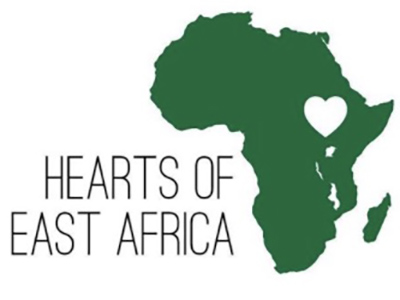
By Maggie Ryals
I have always associated the month of February with Valentine’s Day and hearts; however, the kind of “hearts” I have associated with the holiday have always tended to be of the chocolate variety.
So when I was offered the opportunity to provide anesthesia on a congenital heart medical mission trip during the month of February, “hearts” took on a new meaning for the holiday.
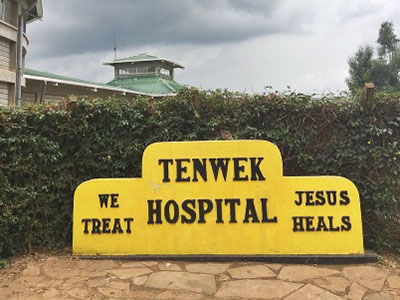
The two-week trip was at Tenwek Hospital outside of Bohmet, Kenya, and treated patients with not only congenital heart lesions, but also patients suffering from complications of rheumatic heart disease. Our team arrived the second week, and included people from both the U.S. and Canada, with varying health care backgrounds.
During my week in Africa, we performed eight heart surgeries and several cardiac procedures in a makeshift cath lab on patients ranging from 1 to 13 years old.
Our first patient was a wonderful 9-year-old girl from Uganda who had been kicked out of school at the age of 4 because of her activity intolerance. She had a hole in her heart that prevented her from keeping up with her peers. She did remarkably well and I hope she will be able to catch back up with her class.
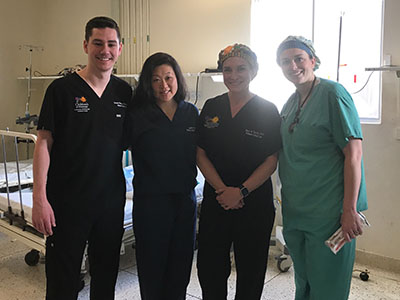
Mid-week, we saw another patient who had some bleeding issues after surgery and required several blood transfusions. When the hospital ran out of O-positive blood and needed donors, I happened to be the only eligible donor on our team. Of all the wild things I had imagined could happen in Africa, giving blood in a Kenyan mission hospital had never even crossed my mind. Watching my donation immediately help someone, however, was amazing: She received the blood and ended up doing extremely well.
Like any great adventure, the climax came on the final day of the trip. During our second case that day, which was a far bigger and more complicated procedure than initially anticipated, a fire broke out in a hospital building adjacent to our operating room. The burning building housed multiple departments, including the wound care clinic, the canteen, administration, laundry and boiler.
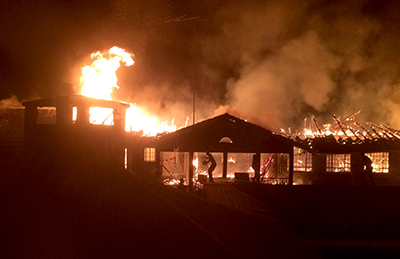
As the fire raged outside, people were frantically moving patients out of harm’s way. The hospital did not have any sprinkler heads and only had rudimentary fire-fighting equipment. The fire truck arrived and did not have water, but only brought people to help.
Our patient was on the cardiac bypass machine and the repair was not complete, so we had no choice but to stay in the operating room and complete the surgery. It was terrifying not knowing what was going on outside and wondering if the whole place was going to explode.
In the midst of the surgery, the surgeon from Kenya looked up and asked if we could stop and say a prayer. Everyone agreed this was a good idea, so we did. We prayed for safety outside the operating room as well as in it, and for God to bring calmness to the operating room so we could finish the procedure and give the child a future.God delivered. The fire was contained to one building and the child made it out of surgery after nine hours on the bypass machine. We finished the surgery at 3:30 a.m. Saturday. The ICU team was able to take out his breathing tube the following day!
Sunday morning, I attended the hospital’s church service and was amazed by the spirit and hope of the people. We prayed for the hospital and the community and celebrated that no one had been hurt. The fire had taken so much from the hospital, but ignited the community to gather together and help alleviate the laundry and canteen issues.It was amazing to share that experience with the community and it made me proud to obtain a deeper and truer understanding of what global citizenship truly means.
International mission Q and A
By Blake Ward
Q: Where did you go for your mission trip?
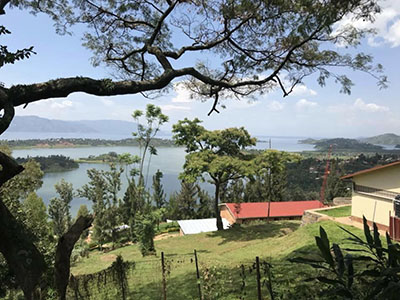
A: Kibogora, Rwanda
Q: What was the hospital and surgical setup like where you went?
A: Kibogora has a population of 250,000 and there is one hospital with 269 beds. There is one staff surgeon. There were two missionary surgeons present while we were there: one from Germany and one from Fairhope, Alabama. There were five staff anesthesia providers made up of two CRNAs and three “non-physician anesthesia providers” who are nurses who simply shadow other anesthesia providers for on-the-job training. I was told there are 10 anesthesiologists and 260 other anesthesia providers for the country’s population of 12 million. My mission group brought two surgeons, one surgery resident, two medical students and myself to service the OR.
Q: What type of anesthesia monitoring and administration was available?
A: There were two ORs: Both had outdated Ohmeda machines. I did the first four cases (three geta, one sab) with only a BP cuff, O2 sat and EtCO2. The second day we located the two new monitors the missionaries had brought. I hooked them up and taught the anesthetists how to use them during the next week. These new monitors gave them the ability to monitor EKG, respirations and temperature for the first time. The ventilator worked some of the time on one machine and didn’t work at all on the other. Both machines sounded alarms constantly. The same bag, mask and circuit was used for the entire time I was there.
Q: How long were your days and what kind of cases did you do?
A: I had 27 cases: 11 geta, nine mac and seven sab. A day was typically 8 a.m.-5 p.m. with a 1.5-hour lunch break. Cases included:
50-year-old prostate sab
3-year-old ileostomy reversal geta
3-year-old IHR geta
30-year-old thyroidectomy geta
——
35-year-old ovarian cyst geta
10-year-old UHR mac
23-year-old rectal fissure mac
23-year-old perianal abscess saddle block
——
6-year-old UHR mac
40-year-old ORIF femur sab
35-year-old submandibular mass geta
——
2-year-old Wilms Tumor geta caudal
50-year-old mastectomy geta
55-year-old epidural steroid injection
——
60-year-old hemorrhoid sab
50-year-old UHR sab
9-year-old typhoid fever ex-lap SBR geta
——
30-year-old fetal demise geta
——
7-year-old IHR local, mac, caudal
74-year-old vulva mass saddle block
32-year-old ex lap peritonitis geta
30-year-old incarcerated hernia sab
——
5-year-old tooth extraction mac
36-year-old ovarian mass geta
9-year-old fasciotomy closure mac
41-year-old I&D facial mass
33-year-old anal sphincter release mac
Q: Was there an experience or case that was particularly rewarding from a personal and/or professional standpoint?
A: Doing four cases with only a BP cuff, sat and CO2 (was challenging). When the power to the hospital would go out (once every other day), that added to the level of difficulty. Also, their large oxygen cylinder ran out during a geta and I had to bag with room air while it was exchanged.
Q: Was there an experience or case that was particularly difficult for you to handle or to cope with during your trip?
A: The 2-year-old Wilms Tumor (was difficult). The patient weighed 20 pounds and the tumor was 7.25 pounds. We only had one 200 ml bag of blood in the hospital. He did perfectly. That would have been a difficult case at home and we did it with extremely limited resources.
Q: What advice do you have for those considering doing mission work in the future?
A: Just do it!


